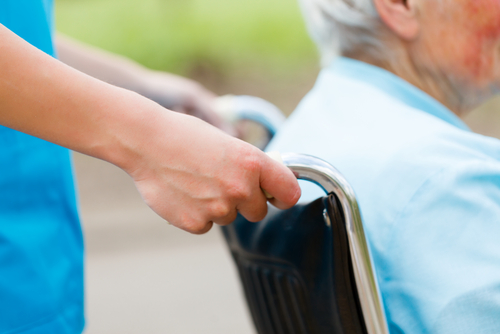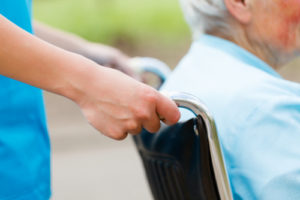Innovative Approaches To Rehabilitation In Nursing Homes
- Home
- PASADENA NURSING CENTER
- Innovative Approaches To Rehabilitation In Nursing Homes

Innovative Approaches To Rehabilitation In Nursing Homes
28 May, 2024
Senior Living Facilities
Rehabilitation in nursing homes has traditionally focused on helping residents regain mobility, strength, and independence after an illness, injury, or surgery. However, with advances in technology and a growing emphasis on holistic care, nursing homes are adopting innovative approaches to rehabilitation that enhance recovery outcomes and improve the quality of life for residents. This article explores some of the most promising and innovative rehabilitation approaches being implemented in nursing homes today.
1. Integrating Technology in Rehabilitation
- Virtual Reality (VR) Therapy
Virtual reality (VR) therapy is revolutionizing the way rehabilitation is conducted in nursing homes. VR therapy uses immersive simulations to engage residents in therapeutic exercises and activities. For example, residents can participate in virtual walks through scenic landscapes, play interactive games that improve hand-eye coordination, or perform exercises in a virtual gym. VR therapy can make rehabilitation more enjoyable and motivating, which can lead to better adherence and outcomes.
- Telehealth and Remote Monitoring
Telehealth services and remote monitoring technologies allow healthcare providers to deliver rehabilitation services and monitor residents’ progress from a distance. This approach is especially beneficial for residents who have difficulty attending in-person sessions. Telehealth enables therapists to conduct virtual consultations, provide real-time feedback on exercises, and adjust treatment plans as needed. Remote monitoring devices can track vital signs, physical activity, and other health metrics, providing valuable data to inform personalized rehabilitation plans.
2. Holistic and Person-Centered Care
- Multidisciplinary Care Teams
Innovative rehabilitation in nursing homes often involves multidisciplinary care teams that include physical therapists, occupational therapists, speech therapists, nutritionists, and mental health professionals. This holistic approach ensures that all aspects of a resident’s health and well-being are addressed. For instance, a resident recovering from a stroke might receive physical therapy to improve mobility, occupational therapy to regain daily living skills, and speech therapy to address communication challenges, all coordinated by a team working together to achieve the best outcomes.
- Individualized Rehabilitation Plans
Person-centered care emphasizes the creation of individualized rehabilitation plans tailored to each resident’s unique needs, preferences, and goals. This approach involves residents and their families in the decision-making process, ensuring that rehabilitation activities are meaningful and relevant to the resident’s life. Individualized plans can increase motivation, engagement, and satisfaction with the rehabilitation process.
3. Innovative Rehabilitation Techniques
- Robotics and Assistive Devices
Robotic therapy and assistive devices are being increasingly used in nursing homes to aid in rehabilitation. Robotic exoskeletons, for example, can assist residents with walking exercises, providing support and resistance to help strengthen muscles and improve gait. These devices can be particularly beneficial for residents with severe mobility impairments. Additionally, advanced prosthetics and orthotics can help residents regain functional independence.
- Aquatic Therapy
Aquatic therapy, or hydrotherapy, involves performing therapeutic exercises in a pool. The buoyancy of water reduces the impact on joints and muscles, making it an ideal environment for residents with arthritis, joint pain, or mobility limitations. Aquatic therapy can improve strength, flexibility, balance, and cardiovascular health, and is often perceived as more enjoyable and less strenuous than land-based exercises.
- Cognitive Rehabilitation
Cognitive rehabilitation focuses on improving cognitive functions such as memory, attention, and problem-solving skills. Innovative approaches to cognitive rehabilitation include the use of computerized cognitive training programs, memory games, and puzzles. These activities can be tailored to the individual’s cognitive abilities and progress, making rehabilitation both challenging and achievable. Cognitive rehabilitation is essential for residents with conditions such as dementia or those recovering from brain injuries.
4. Enhancing Engagement and Motivation
- Therapeutic Recreation
Therapeutic recreation involves engaging residents in leisure activities that have therapeutic benefits. Examples include gardening, arts and crafts, music therapy, and animal-assisted therapy. These activities not only provide physical and cognitive benefits but also enhance emotional well-being and social interaction. By incorporating residents’ hobbies and interests into their rehabilitation plans, nursing homes can create a more engaging and enjoyable experience.
- Group Therapy and Social Support
Group therapy sessions can be highly effective in fostering a sense of community and mutual support among residents. Group exercises, rehabilitation classes, and support groups encourage social interaction, which can boost motivation and reduce feelings of isolation. Residents can share their experiences, celebrate progress, and support each other in their rehabilitation journeys.
The landscape of rehabilitation in nursing homes is evolving, with innovative approaches enhancing the quality and effectiveness of care. From the integration of cutting-edge technology to holistic, person-centered care plans, these advancements are making rehabilitation more effective, engaging, and tailored to the unique needs of each resident. As nursing homes continue to adopt and refine these innovative practices, residents can look forward to improved outcomes and a higher quality of life during their rehabilitation journey.
Leave a Comment